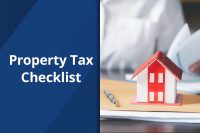6 Ways to Get a Lower Monthly Mortgage Payment

Here’s what you need to know about getting a lower monthly mortgage payment:
- Refinancing, recasting, or modifying your loan can lead to a lower monthly mortgage payment.
- Eliminating your mortgage insurance can also reduce monthly payments by removing a portion of the monthly costs.
- Shop around for a better home insurance rate to get a lower monthly payment.
- Protest your property taxes with Gill, Denson & Company to reduce your tax burden, which will also lower your monthly mortgage payment.
6 Ways to Get a Lower Monthly Mortgage Payment
Your monthly mortgage payment typically includes your loan principal, interest, mortgage insurance, homeowners insurance, and property taxes. When you save up to buy a home, you should factor all these expenses into your budget. However, you don’t need to stick to that budget throughout the life of the loan. There are ways to get a lower monthly mortgage payment to make room for other finances in your life.
Here are a few ways we will cover in more detail:
- Refinance your mortgage.
- Get rid of your mortgage insurance.
- Recast your loan.
- Look for cheaper home insurance.
- Extend the term of your mortgage.
- Protest your property taxes.
Refinance Your Mortgage
You can replace your current mortgage with a new one by refinancing. You’ll typically only want to do this if you can get better terms, like a lower interest rate. Keep in mind that you’ll need to pay fees and closing costs when you refinance. Your eligibility for refinancing will also depend on how old your current mortgage is and whether your lender will approve it or not.
If a lower interest rate isn’t available, you can get one by “buying down” your rate with points. Both methods increase your upfront costs, so make sure you stay in the home long enough to reach the break-even point. If you can secure a new mortgage with a lower interest rate, your monthly mortgage payment will be lower.
Get Rid of Your Mortgage Insurance
Not all loans require mortgage insurance, but if yours does, you can achieve a lower monthly mortgage payment by getting rid of it. Conventional mortgages with a down payment less than 20% require Private Mortgage Insurance (PMI) while FHA loans require a Mortgage Insurance Premium (MIP).
PMI can be cancelled once you reach 20% in home equity. MIP can be cancelled after 11 years, as long as you put down at least 10% in the beginning. If your down payment was less than 10%, the MIP must stay for the life of the loan. In that case, you can convert your FHA loan to a conventional loan and meet the 20% equity requirement.
Recast Your Loan
Make a lump sum payment toward the loan principal to recast your mortgage. Your lender will then recalculate your monthly payments based on the new balance and the same loan terms. This is called re-amortization, and it will reduce your monthly mortgage payments because you’ll owe less on the principal and interest. Most lenders charge some kind of fee for this, and you will need a significant amount of funds to recast.
Look for Cheaper Home Insurance
Home insurance may be required, but you don’t have to stick with the same plan or provider forever. Shop around for better rates and ask about discounts you may be eligible for. Some factors for discounts include home security systems, smoke alarms, a newer roof, multiple policies, and zero or few claims in the last several years. Other ways to get a lower home insurance rate are to increase your deductible or improve your credit score.
Modify Your Loan
Modifying your loan involves changing the rate or terms of your mortgage without refinancing. This is a government program for those in financial distress, such as losing your job, and not every lender will allow it. If they do, there are typically strict eligibility rules. You’ll also likely pay more interest over a longer period, so while your monthly payments might be lower, your overall costs can be higher.
Protest Your Property Taxes
Your annual property taxes are often rolled into your monthly mortgage payments and deposited into an escrow account. The County Appraisal District (CAD) appraises the taxable value of your home, which is used to calculate your property taxes. However, the CAD doesn’t always get the value correct, and you have the right to protest your property tax assessment. If you can prove that your home is overvalued, you can get a lower property tax bill and, therefore, a lower monthly mortgage payment.
Gill, Denson & Company is not a lender or financial advisor. Please contact your lender to discuss your options for a lower monthly mortgage payment and the benefits and consequences of refinancing, recasting, or modifying your loan.
When it comes to protesting your property taxes, the tax experts at Gill, Denson & Company are ready to assist. Get started on your property tax protest today!









